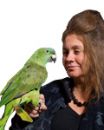Are You an Intuitive or Analytical Thinker?
The answer is not what you think.
Here’s a simple test of reasoning ability:
“A bat and a ball cost $1.10 in total. The bat costs $1.00 more than the ball. How much does the ball cost?” (Pennycook et al., 2015).
If your answer was “10 cents,” congratulations! You responded like most people. You followed your intuitions—“10 cents” just feels like the right answer. You got the answer wrong, by the way, but still you’re a normal human being.
If your answer was “5 cents,” congratulations are also in order. You made the effort to think analytically, and you got the right answer. You’re also in the minority, by the way—a rare breed of human.
So, are you an intuitive or analytical thinker? If you think the test above can tell you which type you are, you need to think again.
According to Canadian psychologist Gordon Pennycook and his colleagues, all of us are intuitive thinkers. As we solve problems and make decisions in our daily life, we let our emotions guide us. And that’s a good thing, because our “gut feelings” have been honed over evolutionary history to help us quickly and effortlessly achieve good enough outcomes.
Take ordering a meal at a restaurant as an example. You look over the menu, find something appealing, and order it. If you attempted a rational decision making process in this case, you’d get stuck in “paralysis by analysis”—unable to make a choice.
Yet, there are cases where intuitions will lead us astray. The “bat and ball problem” above is but one example. Because intuitive thinking is the default mode for humans, most people respond with a “quick and dirty” response that gets the answer wrong. However, as Pennycook and his colleagues point out, some of us are willing to expend the effort to think in an analytical fashion.
It’s important not to think of intuitive and analytical thinkers as two different types of people, since all of us are capable of both modes of reasoning. Some people are more in the habit of thinking analytically. People in the STEM (science, technology, engineering, and math) fields have years of training in analytical thinking. But even these people can be led astray by their intuitions, especially when working on problems outside their area of expertise. Likewise, even highly intuitive people can be coaxed into thinking analytically under the right circumstances.
There are significant life consequences for people who are willing to engage in analytical thought processes. Religion is a good example. All religious faiths are based on intuitions. We’re indoctrinated with the beliefs and practices of our particular religion in early inchildhood, accepting these teachings as obvious truths. Yet those who are willing to think analytically quickly spot the logical inconsistencies in religious tenets, and they question their childhood faith.
More generally, people who habitually engage in analytical thinking also tend to be more skeptical toward paranormal claims and supernatural beliefs. They’re also more likely to question claims that, while not supernatural, still don’t reconcile well with a logical, materialistic worldview. For example, they question conspiracy theories, which are usually more complicated than standard explanations. Likewise, they take a dubious stance toward alternative medicine.
Analytical thinking also affects people’s moral attitudes. All of us have an innate moral sense that we share with our primate cousins and perhaps other mammals as well. When we put these rules of behavior into words, they’re usually phrased as “shoulds” and “shouldn’ts.”
As far as an innate moral sense is concerned, “shoulds” typically invoke emotions that compel us to cooperate with family and friends. Psychologists refer to this urge-to-help intuition as “prosociality” because it’s the backbone of primate—including human—social behavior.
Pennycook and his colleagues found that people who mainly engage in intuitive thinking are more likely to help out, even at a considerable cost to themselves. People who think analytically aren’t necessarily selfish or greedy. However, in social exchanges they tend to evaluate the potential payoffs to themselves and others, and they gladly help when it benefits others more than it costs themselves.
The “shouldn’ts” of our innate moral sense are mainly derived from the more evolutionarily ancient emotion of disgust. We experience disgust in the presence of things like feces, vomit, blood and other bodily fluids because these are all substances that carry disease. Thus, disgust is an automatic response to things that can cause sickness.
While some things are universally disgusting, we can also learn to feel disgust for items that have made us ill in the past. For me, it’s peanut butter. Even the smell makes me retch.
People who are guided by their intuitive morality tend to deem behaviors that they personally find disgusting to be immoral for everyone. For example, a heterosexual male may deem homosexuality immoral because he finds the thought of himself engaging in such an act disgusting.
People in the habit of thinking analytically, however, tend make moral judgments in terms of the question: “What’s the harm?” If the behavior hurts no one, then it is moral. Thus, analytical thinkers will see nothing immoral about homosexual acts by consenting adults. By the same token, discrimination against same-sex marriage is seen as harmful, since it deprives these couples of legal and economic rights that are granted to heterosexual unions.
In just a couple of decades, American popular opinion on same-sex unions shifted from overwhelmingly negative to overwhelmingly positive. I suspect this is because many Americans were coaxed into thinking analytically about the issue and asking themselves, “What’s the harm?”





